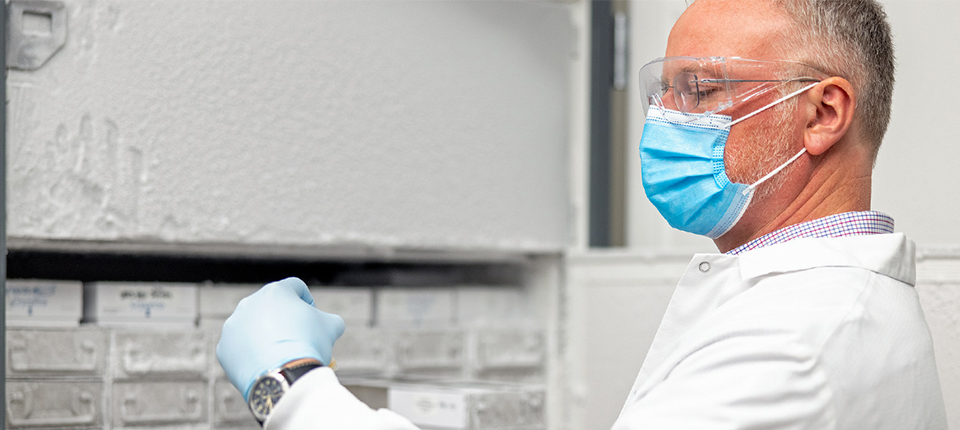
How Do We Help Prevent the Next Pandemic? Collaboration.
Our Pandemic Defense Coalition is here to help stop future pandemics in their tracks through global partnership. ,
Mar. 11, 2021
- Copy Link
- Share on X
- Share on Facebook
- Share on Linkedin
We think it's safe to say, nobody ever wants to endure another pandemic. COVID-19 emphasized the importance of preparedness and containing viral threats before they reach every corner of the world.
The year 2020 put into perspective just how quickly we need to act to prevent the spread of a dangerous new virus. Only about 80 days after the World Health Organization was alerted to a suspicious pneumonia-like illness, the world had surpassed 500,000 cases, and nations found themselves grappling with a public health emergency.
How do we act fast enough to help prevent a suspicious virus from turning into a global pandemic? Collaboration.
That's where the Abbott Pandemic Defense Coalition comes in - a first-of-its-kind global scientific and public health partnership dedicated to the early detection of — and rapid response to — future pandemic threats. We've partnered with global centers of excellence to identify, analyze and test emerging viral threats quickly to help stop emerging pandemics in their tracks.
The coalition is designed with a comprehensive approach to containing emerging threats, with partners ranging in expertise from scientific research, public health and diagnostic testing to attack new viral threats from all angles. The ability to have global experts simultaneously use their expertise on the ground around the world to identify, analyze, develop testing and enact public health guidelines in response to a viral threat could save precious time needed to help prevent exponential spread.
Here's how it'll work, step by step.
- When doctors identify patients with unknown conditions that they cannot treat or diagnose, it's often the first sign that there may be a potential unknown viral threat among us.
- Once our Pandemic Defense Coalition receives the patient samples, they will be tested on our existing diagnostic instruments to see whether a previously known virus is detected.
- Genetic sequencing and analysis will then identify signatures, peculiarities or mutations that may indicate an emerging outbreak.
- If a potential threat is discovered, the sequences of the viruses that are found will be published in a public database so that health officials and laboratories can work together to identify if it's a novel strain, or a virus that has previously been detected.
- If it is deemed a new viral threat, we will quickly develop diagnostic testing to assist in containment efforts.
This process and partnership allows our network to anticipate viral threats before they occur, enabling rapid responses and much-needed diagnostic testing.
"Our goal is to help prevent history from repeating itself," said Gavin Cloherty, Ph.D., head of infectious disease research at Abbott. "This Abbott-led elite global network of virus hunters is already working to help stop viral threats in their tracks."
This coalition is in full force as our scientists are currently monitoring new COVID-19 variants. We're collecting and analyzing samples from around the globe to look for mutations that may impact the function of the virus to ensure that our tests are able to detect them, aiming to prevent further spread. But it doesn't just stop with COVID-19, we're already steps ahead of the next viral threat.
We can't fight what we can't see coming. We're taking lessons learned from the COVID-19 pandemic and applying them to this program. It's safe to say that we never want to go through this again, and the work of the Abbott Pandemic Defense Coalition is another important step to protecting our health, our economies and our lives.
For the latest on Abbott’s life-changing technology, get updates directly in your inbox.